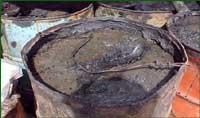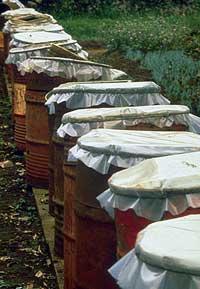120,000 tons of obsolete waste on the black continent
2002/09/19 Kortabarria Olabarria, Beñardo - Elhuyar Zientzia

The data were provided by FAO pesticide expert Alemayehu Wodageneh. "In all African countries," says Wodageneh, "obsolete pesticides suffer the consequences of contaminated land and the millions of accumulated containers." In many cases these containers accumulate outdoors and, among other things, due to temperature fluctuations, deteriorate rapidly. Even when the state of packaging warehouses is good, because of the existence of similar products, packaging deteriorates and spills occur.
According to the FAO, these pesticides are very dangerous for the population of both cities and towns, especially for those in the worst situation, as they degrade the land and pollute the water. It is estimated that about 30% of waste is of persistent organic-polluting type, in English POP type.

Nor has it been possible to eliminate 5% of the waste that existed in the last ten years, although FAO itself has a specific program for it. "In some countries, along with the destruction of these residues, we have done better control over pesticides and have used alternative means to fight pests successfully. However, in all places we have not been able to do this kind of work and, in general, it is possible that waste can continue to accumulate at a faster rate than it is destroyed."
As there is no hazardous waste disposal service in these countries, they have been taken to developed countries for incineration at high temperature. But this process is very expensive, 3.500 euros per ton approximately. However, there is a program for the disposal of these toxic waste. According to him, in the next 10-15 years obsolete waste will be eliminated, preventive measures will be taken and experts will be trained. All this with a budget of between 200 and 250 million euros, promoted by various international institutions: World Bank, United Nations, FAO itself…

Gai honi buruzko eduki gehiago
Elhuyarrek garatutako teknologia






